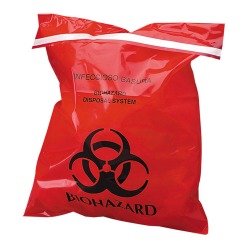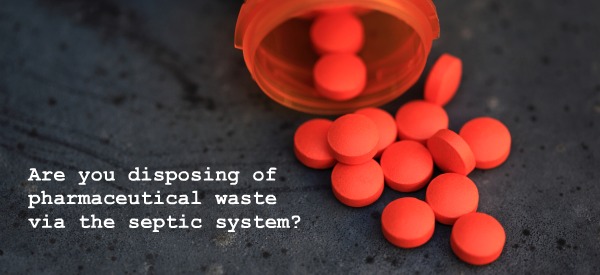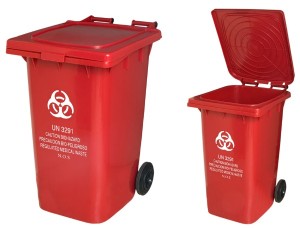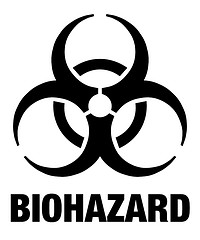By Dennis Lane
For much of my life, I paid little attention to the disposal of medications that I no longer needed, and as I grow older, unfortunately I need more of them. No longer needed or out of date, this cocktail of unwanted prescription drugs or over the counter cough-tinctures and other medications that are past their sell by date used to get tossed into the regular trash without much ceremony or thought, or worse. Some people flush them into the septic system, where eventually, they end up in potable water system, creeks or bays. It’s about time to rethink. In this regard, our actions do harm to the environment, even though in other regards, we pride ourselves on being good stewards of our community and ecosystem. I am extremely diligent when it comes to discarding all manner of household products including batteries, oils and toxic waste, but these powerful toxins found in our medicine cabinets are getting overlooked. There is increasing concern about what the effects of these drugs are once they find their way into our ground water, rivers, lakes estuaries or oceans and ultimately back into us.
These potent chemicals enter our environment, no surprise, through our use of septic systems. Nothing it seems remains static forever. Even seemingly innocuous shampoos, (some, not all), contain hormones and some lipsticks contain lead, so it may well be worth it for us to take this issue more seriously. We may not be able to stop every chemical from getting into our water, (ex, human waste from those using medications released into home septic systems), we certainly can reduce greatly, unused or out of date medications that ought not be simply flushed or thrown away.
Let’s stop disposing of all medications, both prescribed and over the counter, in a thoughtless fashion and start insisting that pharmaceutical companies and/or our waste transfer station in Southold help us keep these drugs out of our extensive North Fork waterways, the ground water that we drink and our creeks and bays, which support our wildlife. This is human waste pollution that is not even on the radar in our community, and in the overall scheme of things, it should be.
Just like other containers, all medication vessels need to instruct users how to dispose of them properly so as not to pollute. Pharmacists could and should participate in the collection and proper disposal of medical waste from our community on a day to day basis.
I believe that most of us out here on the East End would never consider draining the oil from our cars directly into the ground, so why is it that we give even less consideration when disposing of harmful pharmaceutical chemicals? Other communities seem to have a handle on this, why don’t we? In Marinette, Wisconsin, they set up special dates and times to collect all manner of drugs and use the local police to make sure that no illegal use can come from them being turned in. Southold could consider this an option and to start, I propose that our town provide a tamper proof container at our land fill to collect all unwanted medications used for both humans and animals until a more permanent solution be agreed. This is not rocket science, or something that requires years of study. We simply need the Town to provide a secure container to use as a receptacle, maybe like a mailbox only stronger, in a place at our town recycling center, where I personally can dispose of my stuff and others likewise, and not tomorrow, next week, or never, but today. Would it be that hard to then return them to the pharmaceutical companies for proper disposal, or even to incinerate?
I’m no scientist, but it should not take an Einstein to see the potential danger these pharmaceuticals pose to all that is special out here. Antidepressants have already shown up in some species of fish living in the lakes of Nevada, so it would be silly to think that we will remain unaffected. We won’t, so if you want to “Save what’s left,” look in your own bathroom cabinet and before you flush, think twice. We can start here and now and proactively take responsibility for taking care of the proper disposal of our own waste before our children and grandchildren start asking us why we ignored the obvious for a whole generation.
We can’t blame everything on the geese!

.
.
.
.
http://www.usatoday.com/news/nation/2008-03-10-water-wildlife_N.htm
http://www.marinettecounty.com/county_calendar/?i=0d6c4d90b3fd
In addition, we have the benefit of the following Federal Guidelines
Should pharmaceutical waste be disposed of down the drain or via sewer systems?
In many instances, at health care facilities and pharmacies, pharmaceuticals are sent to a regulated medical waste incinerator. Additionally, many pharmaceutical wastes are disposed of down the drain. EPA generally considers sewer disposal inadvisable for pharmaceuticals and discourages this practice, unless specifically required by the label on the particular pharmaceutical (see http://www.whitehousedrugpolicy.gov/publications/pdf/prescrip_disposal.pdf for more information on proper drug disposal).
Federal Guidelines:
Do not flush prescription drugs down the toilet or drain unless the label or accompanying patient information specifically instructs you to do so. For information on drugs that should be flushed visit the FDA’s website.
To dispose of prescription drugs not labeled to be flushed, you may be able to take advantage of community drug take‐back programs or other programs, such as household hazardous waste collection events, that collect drugs at a central location for proper disposal. Call your city or county government’s household trash and recycling service and ask if a drug take‐back program is available in your community.
If a drug take‐back or collection program is not available:
1. Take your prescription drugs out of their original containers.
2. Mix drugs with an undesirable substance, such as cat litter or used coffee grounds.
3. Put the mixture into a disposable container with a lid, such as an empty margarine tub, or into a sealable bag.
4. Conceal or remove any personal information, including Rx number, on the empty containers by covering it with black permanent marker or duct tape, or by scratching it off.
5. Place the sealed container with the mixture, and the empty drug containers, in the trash.
Office of National Drug Control Policy October 2009
Proper Disposal of Prescription Drugs
Office of National Drug Control Policy
750 17th St. N.W., Washington, D.C. 20503
p (202) 395‐ 6618 f (202) 395‐6730
Recent studies have documented the presence of various pharmaceutical chemicals and metabolic by-products in surface waters and groundwater in the United States, and the issue of pharmaceutical use and management has become increasingly important. EPA is conducting research on the presence of pharmaceutical compounds in waterbodies and any ecological effects the compounds may be causing, as well as research directed towards improving water treatment capabilities. See http://www.epa.gov/ppcp/work2.html for information on EPA’s research in pharmaceuticals and personal care products in the environment. For these and other reasons, pharmaceutical waste management has become an increasingly critical issue in environmental management for health care facilities.
For more information, see http://www.epa.gov/epawaste/hazard/wastetypes/universal/pharm.htm
http://waste.supportportal.com/ics/support/default.asp?deptID=23023
Photo pills: http://www.flickr.com/photos/pinksherbet/
Photo waterfowl: http://www.flickr.com/photos/biggaypat







No Comments